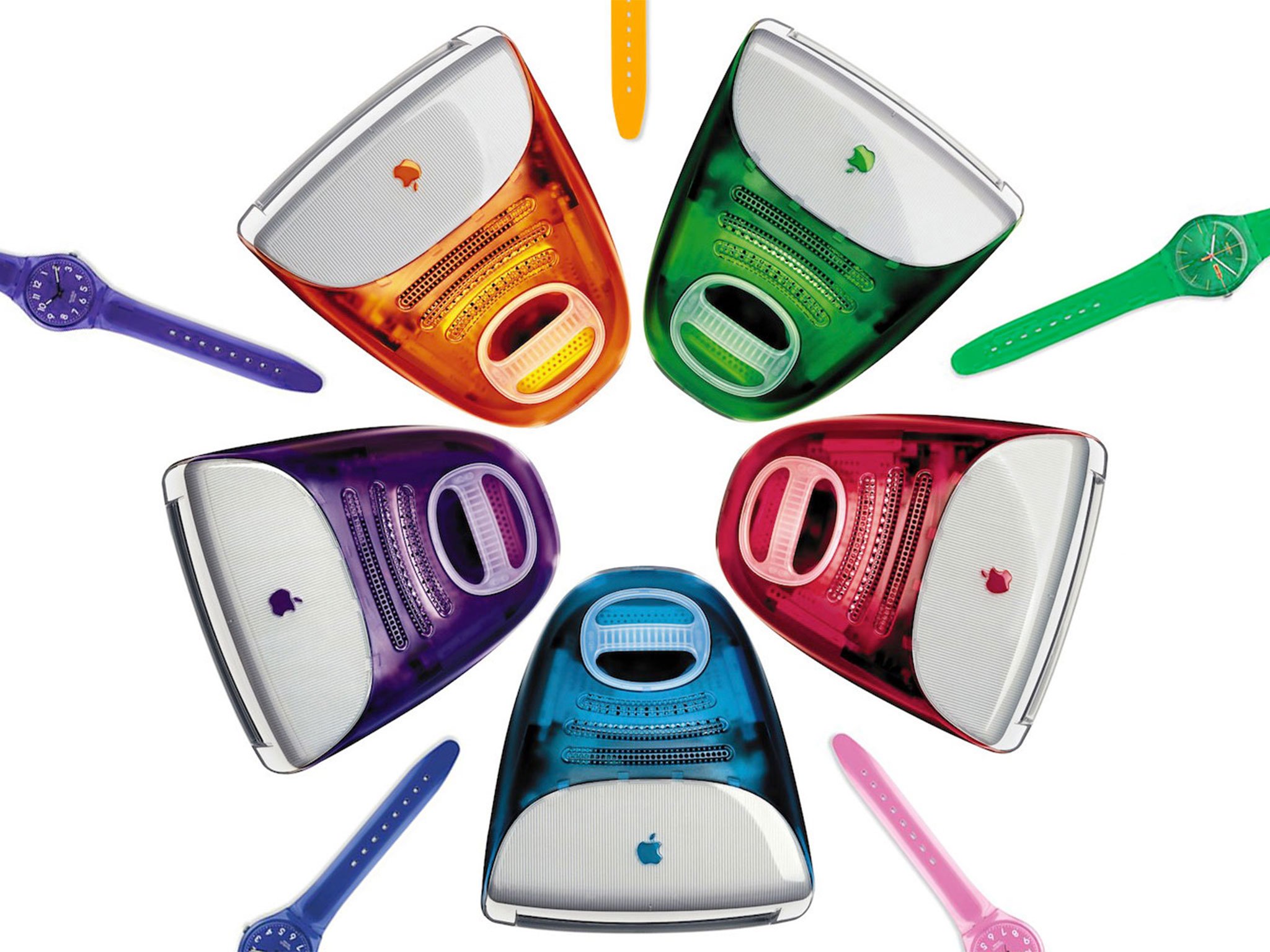The Quartz Crisis and the Bondi Blue iMac

A few days after the release of Watch Kit 1.0 to developers, Guy English, Rene Ritchie, John Gruber, and I sat down to discuss watches in a round table session on the Debug podcast. Partway into our discussion, Guy asked me to explain a pivotal time in the history of the watch industry, known as the Quartz Crisis. It was classical watchmaking's equivalent of the Great Depression.
The Quartz Crisis
For centuries, portable timepieces were powered by springs and regulated mechanically. Then, on Christmas Day of 1969, in Tokyo, Seiko released the Astron — a battery-powered watch, regulated by a tiny quartz crystal that was substantially more accurate than its mechanical counterparts could ever hope to be. Over the ensuing decade quartz timepieces became ubiquitous, thanks to their lower cost, more reliable timekeeping, and reduced need for maintenance. The mechanical watch industry, a cornerstone of Switzerland's economy, was nearly decimated.
By the 1980s, Switzerland's watchmaking labor force had shriveled to a fraction of its former glory. Children who had generations of watchmaking talent behind them were dissuaded by forlorn parents from continuing in their footsteps. In classic Innovator's Dilemma fashion, much of the old-guard moved their product focus up-market.
Companies folded and amalgamations proliferated to save what could be saved. One such amalgamation, between Swiss industry groups ASUAG and SSIH, to form SMH, brought about the birth of Swatch in 1983. A slim, playful, unibody quartz timepiece that out-innovated the tsunami of Asian-made quartz timepieces that were flooding the market.
The Swatch Savior
Nicholas Hayek Senior, the progenitor of Swatch and its umbrella of companies, would eventually come to be known as the savior of the Swiss watch industry. SMH would become the Swatch Group, singlehandedly saving nearly two dozen Swiss brands from extinction, including Omega, Longines, Tissot, and Breguet. Over the ensuing decades, nearly every Swiss timepiece would come to rely on the group's subsidiary companies in one form or another. Even the family-owned crown jewel of the Swiss watch industry, Patek Philippe, depends heavily on Swatch Group owned Nivarox-FAR for its Gyromax balance assemblies that are at the ticking heart of its timepieces.
Swatch watches were innovative not only in the way that they were manufactured, using fewer parts with more automated processes, but also in the way that they were marketed. Prior to Swatch, the palette of color employed by most mass produced watches was relatively plain. The plastic cases introduced by Swatch brought colour and fashion-forward designs that, when paired with low prices, afforded consumers the ability to own multiple watches, which they could coordinate with their wardrobe, mood, or personal style. Swatch watches sold by the millions, buoying much of the rest of the Swiss watch industry, which exported a record $21 billion in 2014.
iMac and Ive
A decade and a half after Swatch debuted its first timepiece, Apple Computer Corp. was facing a crisis of its own. Profits were non-existent and the company was on the verge of collapsing. The situation looked hopeless. Then, on May 6, 1998, a resurgent Steve Jobs unveiled iMac to the world. It was a splash of colour and trend-setting design in a sea of drab, beige boxes. The iMac was a phenomenal success, catapulting Apple back from the brink of bankruptcy and into a series of thoughtfully-designed, category-defining products that would eventually establish them as one of the most valuable companies on the planet.
Master your iPhone in minutes
iMore offers spot-on advice and guidance from our team of experts, with decades of Apple device experience to lean on. Learn more with iMore!
While I didn't make the connection during our roundtable session on the podcast, it turns out that there is a common thread between Switzerland's rise from the Quartz Crisis and Apple's second coming: One of the key players behind the design of iMac was Apple's now Chief Design Officer, Jony Ive.
Reflecting on the design considerations that went into the original iMac, in a biography by Leander Kahney, Ive recounts that, "we talked about companies like Swatch — companies that broke the rules — that viewed technology as a way to the consumer, not the consumer as the path to the technology".
Armed with that knowledge, the aesthetic similarity between the candy-colored cases of the early iMac and Swatch watches becomes strikingly obvious. Likewise, the way that that candy-coloured playfulness enabled both companies to make relatively advanced technology more approachable and accessible to the average consumer.
Butterfly effects
The role that Swatch served in helping both Apple and the Swiss watch industry respond to crisis and the incredible success that followed for both companies is commendable. It's almost poetically tragic that Swatch and its contemporaries now face the threat of a new crisis, in the form of the smartwatch, with Apple Watch at the forefront.
Jon services and restores mechanical timepieces. He has worked on Kello, a mechanical watch analyzer for iOS, and Twixt Time, a watch and clock accuracy analysis tool for iOS.

